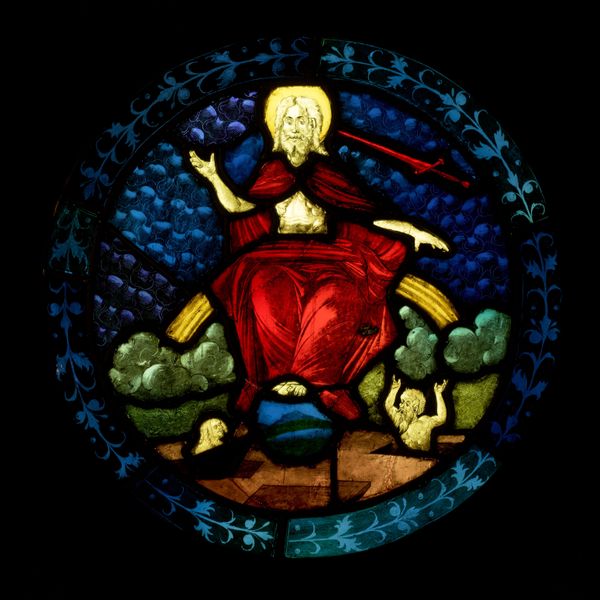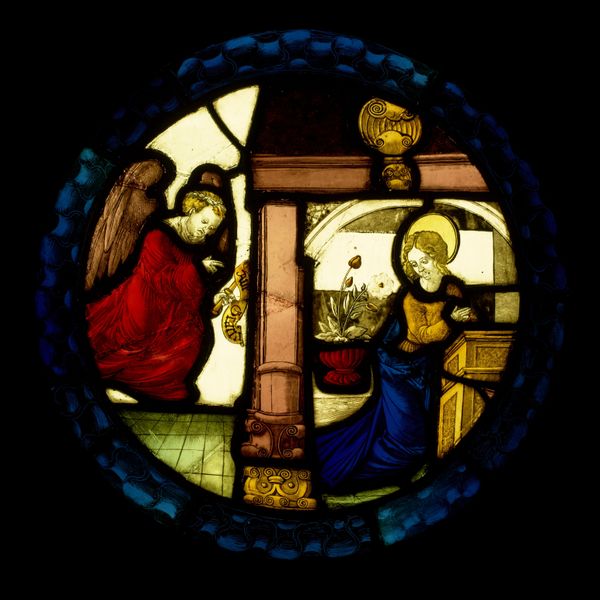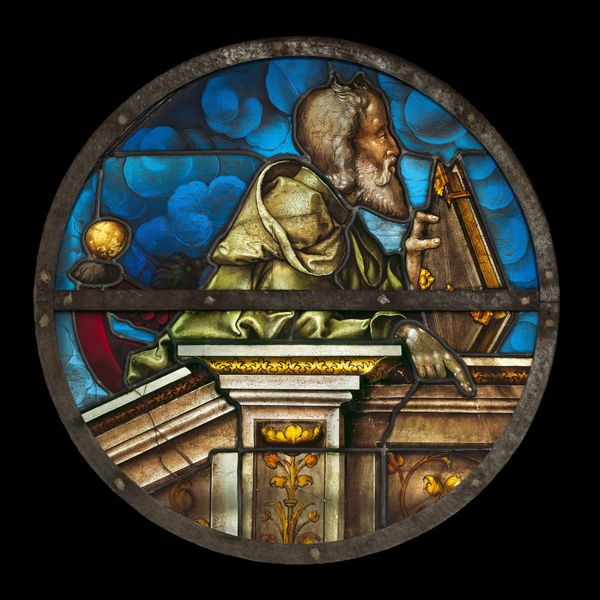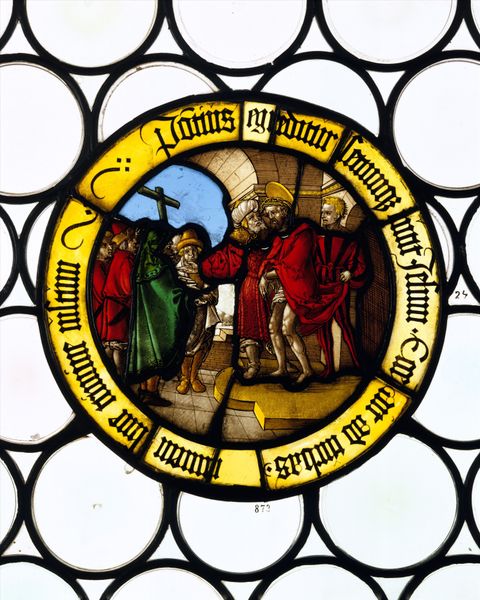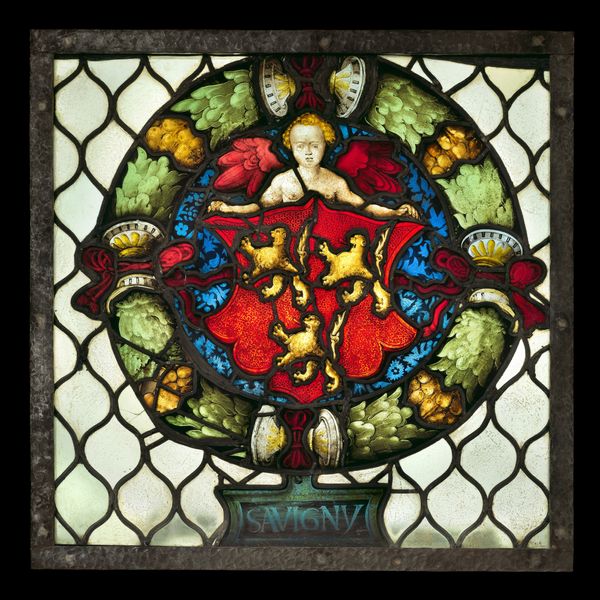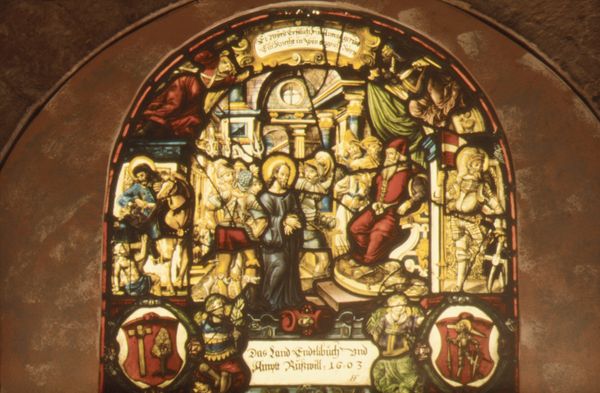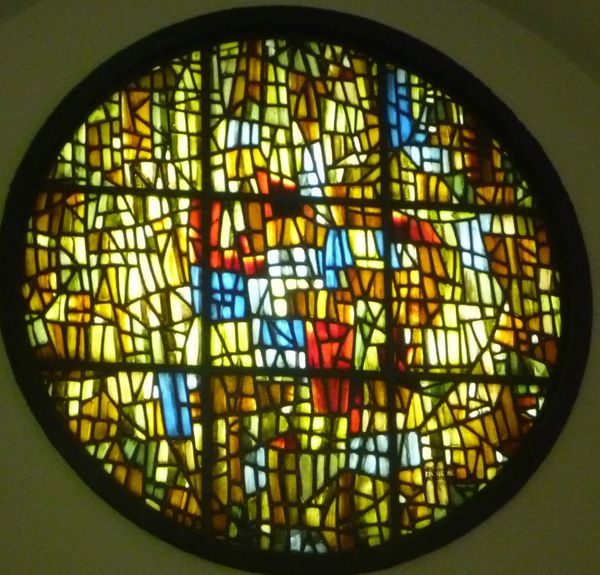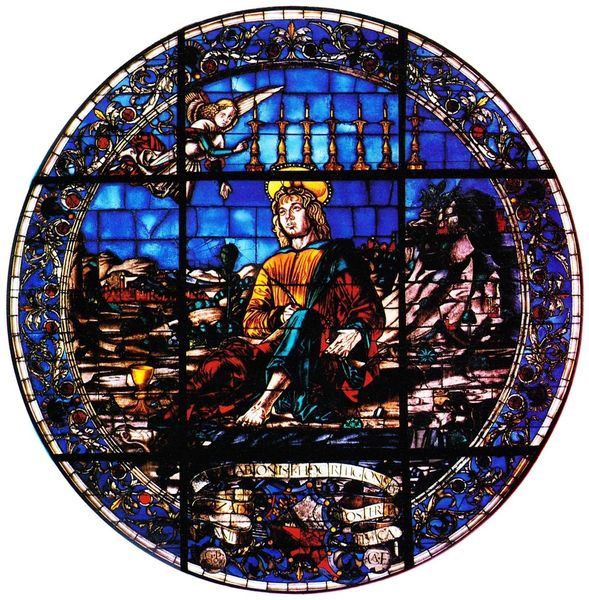
glass, architecture
#
goth
#
medieval
#
narrative-art
#
figuration
#
glass
#
history-painting
#
northern-renaissance
#
architecture
#
gothic
Dimensions: 19 1/4 × 19 1/4 × 1/4 in. (48.9 × 48.9 × 0.64 cm) (approx.)
Copyright: Public Domain
Curator: Here we have a stunning stained-glass roundel, "The Nativity," crafted around 1510 to 1520 by Hans Schäufelein. It currently resides at the Minneapolis Institute of Art. What are your initial impressions? Editor: Immediately, the somber hues strike me, alongside the deliberate partitioning of the scene. It's as if each segment narrates a separate facet of this pivotal event. A sort of deconstructed tableau vivant. Curator: Absolutely. Schäufelein masterfully uses the glass medium, the lead lines dissecting and defining each element—the figures of Mary and Joseph, the Christ child, the architectural features like the stable and the partial brickwork, and even the heavenly cherub. The composition emphasizes line and form above all else. Note the symmetry, for example. Editor: Yet that stark visual language serves a social purpose, situating the narrative within a tangible, though idealized, domestic sphere. We see labor embodied through Joseph's presence and an angel's subtle musical gesture—suggesting both hardship and its heavenly counterpoint. There's a quiet subversiveness at play: Christianity was still largely shaped and promoted by patriarchal perspectives during this period; thus the focus on both the hardship of being an everyman as well as being pregnant and birthing alone in what might appear today as challenging economic situations—these all matter for the viewer in connecting with the subject. Curator: An excellent point. The architectural fragments act as framing devices. The formal repetition adds to a sense of layered symbolism as we see with gothic imagery. Editor: Also, given the prevalence of disease, famine, and social strife, that scene carries immense political weight. Mary is portrayed as more active as opposed to only devout; the humanity embedded in the glass emphasizes shared experiences. I can imagine audiences, confronted with these scenes, are invited into reflection on how such values might speak to them in the day-to-day, where questions of social hierarchies mattered very deeply to what opportunities and protections one was granted. Curator: Indeed. Schäufelein invites us to explore not just the holy narrative but also the everyday struggles and joys, crystallized through impeccable technique and the luminosity of the stained glass. Editor: A fusion of heaven and earth that transcends mere aesthetic appeal, turning material into a testament to collective experience.
Comments
No comments
Be the first to comment and join the conversation on the ultimate creative platform.
